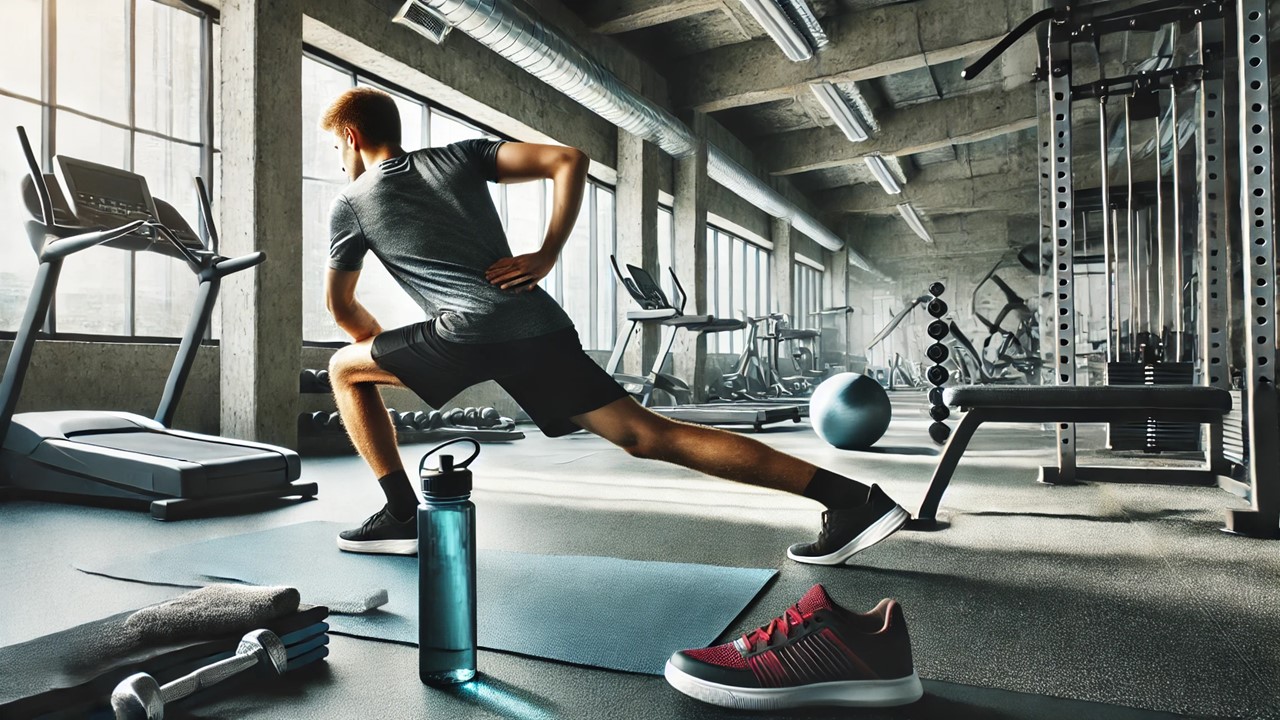One of the most common reasons people abandon their fitness journey is injury. Whether it’s a pulled muscle, joint pain, or a more serious condition, injuries can set you back weeks—or even months. The good news? Most workout injuries are preventable with the right techniques and habits. In this article, you’ll learn essential tips to avoid injuries during training, so you can stay consistent, safe, and pain-free on your fitness journey.
1. Always Warm Up Before Exercising
Jumping into a workout without warming up is one of the fastest ways to get injured. A good warm-up increases blood flow, raises your heart rate, and prepares your muscles and joints for physical activity.
Effective Warm-Up Routine:
- 5–10 minutes of light cardio (brisk walk, cycling, jumping jacks)
- Dynamic stretches (leg swings, arm circles, lunges)
- Bodyweight movements mimicking your workout (e.g., air squats before weightlifting)
2. Focus on Proper Form
Performing exercises with incorrect form puts unnecessary strain on muscles, joints, and ligaments. Prioritize technique over lifting heavy weights.
How to Improve Your Form:
- Watch instructional videos from certified trainers.
- Use mirrors to monitor your posture and movement.
- Ask a personal trainer or gym coach for feedback.
- Record yourself during workouts to spot mistakes.
3. Don’t Skip Mobility and Flexibility Work
Tight muscles and poor joint mobility are common causes of injury. Stretching regularly keeps your body flexible, aligned, and ready for movement.
Best Practices for Mobility:
- Stretch major muscle groups after each workout.
- Include yoga or mobility flows 1–2 times per week.
- Foam roll tight areas (e.g., calves, quads, back).
4. Increase Intensity Gradually
Your body needs time to adapt to new levels of physical stress. Avoid sudden increases in weight, reps, or workout duration.
Tips for Safe Progression:
- Increase weight by no more than 5–10% per week.
- Add sets or reps slowly.
- Alternate heavy and light workout days.
- Listen to your body—pain is a signal to stop.
5. Wear the Right Gear
Using the wrong shoes or workout equipment can lead to injuries like sprains or shin splints.
Workout Gear Checklist:
- Shoes: Choose shoes that match your activity (running, lifting, cross-training).
- Gloves or wraps: Protect your hands and wrists during weightlifting.
- Supportive clothing: Compression gear can help with circulation and joint stability.
6. Stay Hydrated and Eat Properly
Dehydration and lack of nutrients can cause fatigue, cramps, and slow recovery, increasing your risk of injury.
Pre-Workout Nutrition Tips:
- Drink water throughout the day—not just during workouts.
- Eat a balanced meal 1–2 hours before training (carbs + protein).
- Replenish electrolytes if doing high-intensity or long workouts.
7. Prioritize Recovery and Rest Days
Training too often without rest leads to overuse injuries like tendonitis or stress fractures. Recovery is where muscle growth and repair happen.
Signs You Need Rest:
- Persistent soreness
- Poor performance or lack of progress
- Trouble sleeping or fatigue
- Joint or tendon pain
Recovery Tips:
- Take at least 1–2 full rest days per week.
- Sleep 7–9 hours per night.
- Include active recovery (light walks, stretching, yoga).
8. Avoid Overtraining and Listen to Your Body
Pushing past your limits may seem heroic, but it’s often harmful. Know the difference between healthy discomfort and injury warning signs.
Warning Signs of Overtraining:
- Sharp or sudden pain
- Swelling or inflammation
- Decreased coordination
- Extreme fatigue that doesn’t go away
9. Follow a Balanced Training Program
Training the same muscle group every day increases injury risk. A balanced plan works all major muscle groups while allowing recovery time.
Balanced Workout Example:
- Monday: Upper body strength
- Tuesday: Cardio + core
- Wednesday: Lower body strength
- Thursday: Active recovery or flexibility
- Friday: Full-body workout
- Saturday: Light cardio or yoga
- Sunday: Rest
10. Consider Professional Guidance
If you’re new to working out or returning after a break, working with a fitness professional can help you learn proper techniques and avoid injury.
Why Hire a Trainer or Coach:
- Customized training plans
- Hands-on correction of form
- Injury prevention strategies
- Accountability and motivation
Final Thoughts
Injuries can derail your progress, but they are largely preventable with smart training habits. Focus on warming up, using proper form, gradually increasing intensity, and allowing time to recover. A safe fitness journey is a sustainable one—and staying injury-free helps you stay consistent and reach your goals faster.
